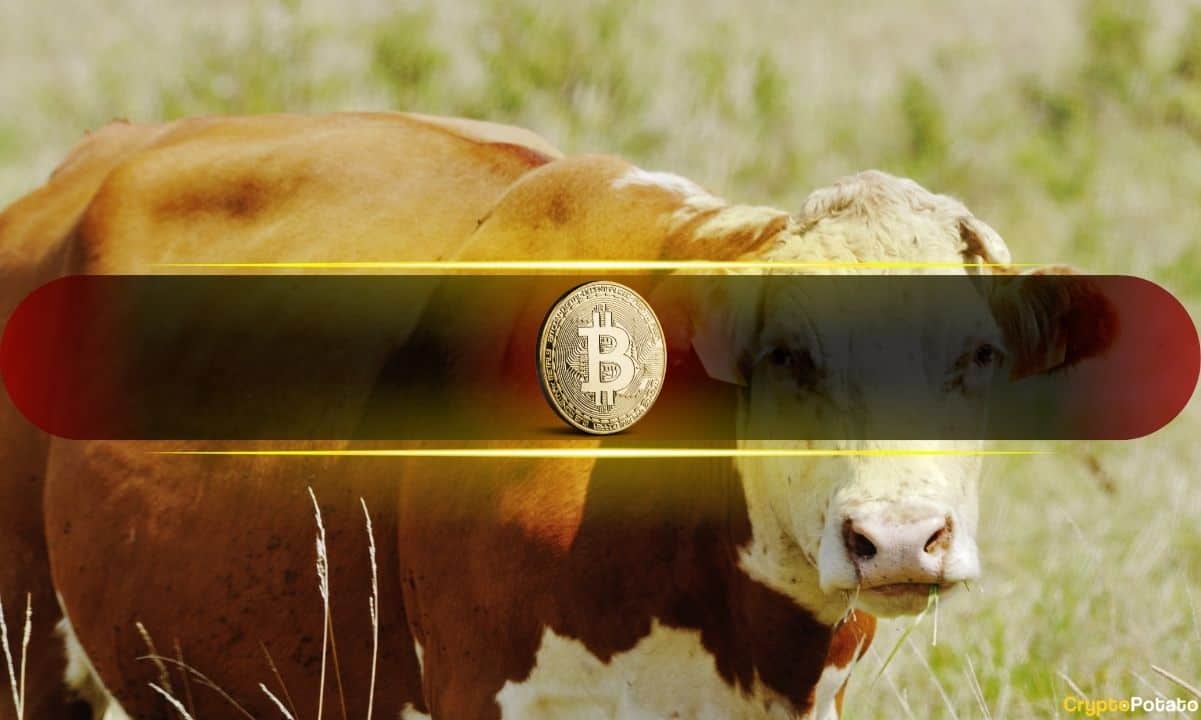Cryptocurrency
Here’s what Mark Cuban had to say about the recent cryptocurrency crash

Cryptocurrencies are an increasingly popular but also volatile investment. And lately, the cryptocurrency sector has experienced a steep decline. In fact, in mid-year, the entire cryptocurrency market fell 70% and lost more than $2 trillion compared to its peak estimate just seven months earlier.
In light of this serious decline, cryptocurrency enthusiast Mark Cuban had some words of wisdom for current and future investors in virtual currencies.
Here’s what Mark Cuban had to say about the collapse of cryptocurrency
Mark Cuban is a billionaire owner of the Dallas Mavericks and a well-known investor best known for his role on the TV show Shark Tank. He personally owns cryptocurrencies, including Ether and Ethereum-based non-fiat tokens (NFTs).
When the market downturn began, Cuban commented on the collapse of Fortune, saying, “In stocks and cryptocurrencies, you will see companies disappear that were backed by easy and cheap money, but that had no viable business prospects.”
However, this does not mean that Kubin believes that all virtual currencies will be affected equally. As he later explained, “As [Warren] Buffett says, ‘When the tide goes out, you can see who’s swimming naked.
Essentially, this means that in tough times, only those currencies that have real value will continue to be possible investments with growth potential. Coins that have no underlying value – in the form of innovative technology or real-world applications – are likely to face steep price declines and probably will not fully recover.
Cuban remains optimistic about the future of cryptocurrency investing
Cuban is not entirely pessimistic about the future of the cryptocurrency market. While he believes that some virtual currencies will likely not survive the crisis, he also made it clear that he thinks others will thrive.
“Breakthrough applications and technologies released during a bear market, whether it be stocks, cryptocurrencies or any other business, will always find a market and succeed,” he said.
He also emphasized the close connection between the cryptocurrency market and Nasdaq, the second-largest stock exchange and exchange on which many leading tech companies, including Apple, Amazon and Meta (formerly Facebook), list their stocks. Tech companies and cryptocurrencies, especially Bitcoin (quote live), tend to have similar performances, especially in recent months.
Although the Nasdaq has fallen periodically, there has always been a recovery and the tech stocks listed there have recovered. There is reason to believe that the same will happen with many virtual currencies, especially those that offer something revolutionary or are backed by robust technology.
“If rates go up, currencies will struggle until they are priced in,” Cuban said, referring to the rise in interest rates caused by the Federal Reserve’s efforts to fight inflation. “The exception, as with action, is new game-changing applications.”
All of this means that Cuban probably won’t give up its positions in the cryptocurrencies it invests in, and probably won’t even advise other cryptocurrency investors to leave the industry. This is especially true for those who, after careful research, make solid investments that they believe can withstand economic crises and stand the test of time.
Cryptocurrency
GameSquare Announces Pricing of Underwritten Public Offering to Launch Ethereum Treasury Strategy

[PRESS RELEASE – Frisco, TX, United States of America, July 8th, 2025]
GameSquare’s Board approves $100 million Ethereum treasury authorization to expand the Company’s crypto-based treasury management strategy over time.
Initial investment fuels GameSquare’s strategic alliance with Ryan Zurrer and Dialectic to deploy an Ethereum-native yield strateg.y
GameSquare Holdings, Inc. (NASDAQ:GAME), (“GameSquare”, or the “Company”), a next-generation media, entertainment, and technology company, today announced the pricing of its previously announced underwritten public offering for the sale of 8,421,054 shares of common stock (or common stock equivalents) at a price of $0.95 per share for expected aggregate gross proceeds of approximately $8.0 million before deducting underwriting discounts and commissions and offering expenses. The Company intends to use the majority of the proceeds to accelerate the launch of its newly formed Ethereum (“ETH”) based treasury strategy, supported by a strategic alliance with Dialectic, a global leader in crypto-native capital management.
“Today’s announcement reflects the confidence of a proven group of high-quality investors and leaders in decentralized finance,” said Justin Kenna, CEO of GameSquare. “We’ve partnered with one of the world’s top crypto investment firms to generate real, on-chain yield while deepening our expertise in decentralized finance, pursuing new revenue streams, and strengthening our balance sheet.”
“This new treasury management strategy enhances our financial flexibility and allows us to support a defined capital allocation plan that is focused on pursuing additional ETH asset purchases, funding potential share repurchases, and reinvesting in our growth initiatives,” added Kenna.
GameSquare’s ETH-focused yield generation strategy is built on top of Dialectic’s proprietary platform Medici, which applies machine learning models, automated optimization, and multi-layered risk controls to generate best-in-class risk-adjusted returns. Targeted yields of 8-14% significantly exceed the current ETH staking benchmarks of 3-4%.
Dialectic’s program includes multi-layered risk management protocols that are widely recognized as the best risk-adjusted yields in DeFi. GameSquare’s new Ethereum-focused treasury vehicle may also incorporate additional yield-generating strategies across the Ethereum ecosystem, potentially utilizing assets such as stablecoins and non-fungible tokens to diversify and amplify returns.
GameSquare’s Board has approved an ETH allocation of up to $100 million, based on staged investments over time, while keeping adequate working capital for the operating business.
“Our crypto strategy reinforces our existing foundation in gaming, technology, and media, and is aligned with the broader trend of institutional adoption of digital assets,” Kenna continued. “Our strategic partnership with leaders in the crypto space including Ryan Zurrer of Dialectic and Rhydon Lee of Goff Capital is just getting started and I am excited to update investors on the quick progress we are making.”
Lucid Capital Markets is acting as the sole book-running manager for the offering.
In addition, the Company has granted the underwriter a 45-day option to purchase up to an additional 1,263,157 shares of its common stock (or common stock equivalents) at the public offering price, less the underwriting discounts and commissions. The offering is expected to close on or about July 9, 2025, subject to customary closing conditions.
The offering is being made pursuant to a shelf registration statement filed with the Securities and Exchange Commission (“SEC”) on March 4, 2025, and declared effective by the SEC on June 4, 2025. A preliminary prospectus supplement and accompanying prospectus relating to the offering have been filed with the SEC and are available on the SEC’s website at www.sec.gov. A final prospectus supplement will be filed with the SEC. Copies of the final prospectus supplement and accompanying prospectus relating to the offering, when available, may also be obtained by contacting Lucid Capital Markets, LLC, 570 Lexington Avenue, 40th Floor, New York, NY 10022.
About GameSquare Holdings, Inc.
GameSquare‘s (NASDAQ: GAME) mission is to revolutionize the way brands and game publishers connect with hard-to-reach Gen Z, Gen Alpha, and Millennial audiences. Their next-generation media, entertainment, and technology capabilities drive compelling outcomes for creators and maximize the brand partners’ return on investment. Through a purpose-built platform, they provide award-winning marketing and creative services, offer leading data and analytics solutions, and amplify awareness through FaZe Clan Esports, one of the most prominent and influential gaming organizations in the world. With one of the largest gaming media networks in North America, as verified by Comscore, GameSquare is reshaping the landscape of digital media and immersive entertainment.
To learn more, users can visit www.gamesquare.com.
Forward-Looking Information
This news release contains “forward-looking information” and “forward-looking statements” (collectively, “forward-looking statements”) within the meaning of the applicable securities legislation. All statements, other than statements of historical fact, are forward-looking statements and are based on expectations, estimates and projections as at the date of this news release. Any statement that involves discussions with respect to predictions, expectations, beliefs, plans, projections, objectives, assumptions, future events or performance (often but not always using phrases such as “expects”, or “does not expect”, “is expected”, “anticipates” or “does not anticipate”, “plans”, “budget”, “scheduled”, “forecasts”, “estimates”, “believes” or “intends” or variations of such words and phrases or stating that certain actions, events or results “may” or “could”, “would”, “might” or “will” be taken to occur or be achieved) are not statements of historical fact and may be forward-looking statements. In this news release, forward-looking statements relate, among other things, to: the Company’s future performance, revenue, growth and profitability; and the Company’s ability to execute on its current and future business plans. These forward-looking statements are provided only to provide information currently available to us and are not intended to serve as and must not be relied on by any investor as, a guarantee, assurance or definitive statement of fact or probability. Forward-looking statements are necessarily based upon a number of estimates and assumptions which include, but are not limited to: the Company’s ability to grow its business and being able to execute on its business plans, the success of Company’s vendors and partners in their provision of services to the Company, the Company being able to recognize and capitalize on opportunities and the Company continuing to attract qualified personnel to supports its development requirements. These assumptions, while considered reasonable, are subject to known and unknown risks, uncertainties, and other factors which may cause the actual results and future events to differ materially from those expressed or implied by such forward-looking statements. Such factors include, but are not limited to: the Company’s ability to achieve its objectives, the Company successfully executing its growth strategy, the ability of the Company to obtain future financings or complete offerings on acceptable terms, failure to leverage the Company’s portfolio across entertainment and media platforms, dependence on the Company’s key personnel and general business, economic, competitive, political and social uncertainties. These risk factors are not intended to represent a complete list of the factors that could affect the Company which are discussed in the Company’s most recent MD&A. There can be no assurance that forward-looking statements will prove to be accurate, as actual results and future events could differ materially from those anticipated in such statements. Accordingly, readers should not place undue reliance on the forward-looking statements and information contained in this news release. GameSquare assumes no obligation to update the forward-looking statements of beliefs, opinions, projections, or other factors, should they change, except as required by law.
Corporate Contact
Lou Schwartz, President
Phone: (216) 464-6400
Email: ir@gamesquare.com
Investor Relations
Andrew Berger
Phone: (216) 464-6400
Email: ir@gamesquare.com
Media Relations
Chelsey Northern / The Untold
Phone: (254) 855-4028
Email: pr@gamesquare.com
Binance Free $600 (CryptoPotato Exclusive): Use this link to register a new account and receive $600 exclusive welcome offer on Binance (full details).
LIMITED OFFER for CryptoPotato readers at Bybit: Use this link to register and open a $500 FREE position on any coin!
Cryptocurrency
200,000 ETH in 2 Days: Is Ethereum’s Price Ready to Pump?

TL;DR
- Large Ethereum investors boosted their collective holdings to nearly 27 million coins (22% of supply), signaling strong confidence in the asset’s future trajectory.
- The whale activity, paired with rising ETF inflows and decreasing exchange balances, suggests reduced sell pressure and growing demand: conditions that could pave the way for ETH’s next potential rally.
Whales on the Move
Ethereum (ETH), which posted significant gains in May and the beginning of June, has recently taken its foot off the gas pedal. Currently, it is worth just south of $2,600, but the whales’ latest activity suggests another resurgence could be on the horizon.
The popular X user Ali Martinez revealed that large investors (those having between 10,000 and 100,000 coins) purchased 200,000 ETH over the weekend.
The USD equivalent of the stash is over $515 million (calculated at current rates), while this cohort of investors now collectively owns 26.88 tokens (22% of Ethereum’s circulating supply).
The whales’ accumulation often signals confidence in ETH’s future performance. Their purchases might prompt retail investors to follow suit and create upward pressure on the price.
Additionally, the development leaves less coins available on the open market, which, combined with surging demand, could trigger a rally.
Price Forecasts
The majority of the crypto community on X also seems optimistic about ETH. The user with the moniker BATMAN claimed the asset “is gearing up for another run” based on the formation of a “megaphone pattern” on its price chart.
“The first hurdle is the resistance at $3500, then the major resistance at $4,200. Altcoins will explode right after. Buckle up,” they predicted.
For their part, Crypto GEMs forecasted that the token’s next pump “will melt faces,” setting a short-term target of over $3,500.
The increased amount of capital flowing into spot ETH ETFs also supports the bullish thesis. Data compiled by SoSoValue shows that the daily netflows have been positive over the past several weeks, suggesting solid interest from investors.
On the contrary, the exchange netflow has been mostly negative in the last few days. This means that an increased number of investors have shifted from centralized platforms toward self-custody methods, which reduces the immediate selling pressure.
Binance Free $600 (CryptoPotato Exclusive): Use this link to register a new account and receive $600 exclusive welcome offer on Binance (full details).
LIMITED OFFER for CryptoPotato readers at Bybit: Use this link to register and open a $500 FREE position on any coin!
Cryptocurrency
Bitcoin Stays Steady, But Momentum Flashes Bullish Signs: Bitfinex Alpha

With bitcoin (BTC) having remained in a consolidation phase for a relatively long time, market participants are wondering about its next direction. Some analysts have predicted a significant correction in the coming weeks, while others believe a positive breakout is imminent.
Despite the state of the market and negative sentiment within a part of the crypto community, analysts at the crypto exchange Bitfinex insist BTC is biased to the upside. This means the cryptocurrency has a higher chance of climbing up than declining.
Bulls In Structural Control
According to this week’s Bitfinex Alpha report, the Bitcoin market has been defending the short-term holder realized price (STHRP) of $98,220 despite recent volatility. Although BTC has fallen below range lows in recent weeks, the asset has found support at the STHRP.
Analysts termed this a constructive signal, indicating that bulls remain in structural control. Bitcoin’s resilience also supports the belief that underlying momentum is skewed to the bullish side.
The STH cost basis has been rising and is now hovering around $99,474, indicating persistent accumulation by newer market participants. This cohort of investors is led by institutional buyers purchasing BTC through exchange-traded funds (ETFs) and balance sheet allocations.
Amid this consolidation phase, Bifinex says bitcoin’s short-term momentum is weakening at range highs. Futures market traders have been closing their positions around levels seen between July 2 and 4. This suggests that while bulls are in structural control, they are unable to trigger and sustain significant price rallies. Hence, the market is still in need of fresh catalysts or clearer macroeconomic signals before prices can surge.
BTC Whales Are Redistributing
Meanwhile, BTC whales are in a distribution phase. Since July 4, mid-sized wallets holding between 1,000 and 10,000 BTC have been slashing their holdings. With more than 14,000 BTC offloaded since June 30, the market is witnessing a cautious stance among high-cap investors.
As whales continue to redistribute amid macro uncertainty, retail and institutional investors are absorbing the supply. So far this month, STHs have increased their collective holdings by more than 382,000 BTC, nearly the same amount as was offloaded by long-term holders. Their purchases have been driving market momentum this month.
“This divergence points to a redistribution of coins from crypto natives to newer entrants and institutions, many likely motivated by recent price dips and renewed macro interest following the strong performance of the equities markets,” Bitfinex stated.
Binance Free $600 (CryptoPotato Exclusive): Use this link to register a new account and receive $600 exclusive welcome offer on Binance (full details).
LIMITED OFFER for CryptoPotato readers at Bybit: Use this link to register and open a $500 FREE position on any coin!

 Forex3 years ago
Forex3 years agoForex Today: the dollar is gaining strength amid gloomy sentiment at the start of the Fed’s week

 Forex3 years ago
Forex3 years agoUnbiased review of Pocket Option broker

 Forex3 years ago
Forex3 years agoDollar to pound sterling exchange rate today: Pound plummeted to its lowest since 1985

 Forex3 years ago
Forex3 years agoHow is the Australian dollar doing today?

 Cryptocurrency3 years ago
Cryptocurrency3 years agoWhat happened in the crypto market – current events today

 World3 years ago
World3 years agoWhy are modern video games an art form?

 Commodities3 years ago
Commodities3 years agoCopper continues to fall in price on expectations of lower demand in China

 Economy3 years ago
Economy3 years agoCrude oil tankers double in price due to EU anti-Russian sanctions































